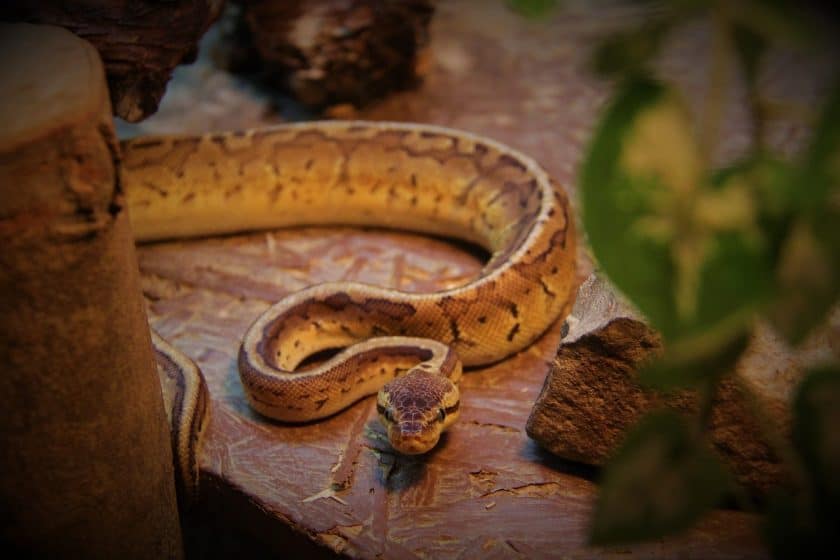How Long Can a Snake Go Without Eating?
Snakes are fascinating creatures with unique physiological adaptations that allow them to survive without food for extended periods. Understanding how long a snake can go without eating involves examining various factors, including the species of the snake, its age, health, environmental conditions, and the last meal’s size and composition. This article explores these aspects in detail, providing insights into the feeding habits of snakes, their metabolic rates, and the implications of fasting on their health.
Overview of Snake Physiology
Snakes belong to the suborder Serpentes and are characterized by their elongated bodies, lack of limbs, and unique feeding mechanisms. They are ectothermic (cold-blooded) creatures, meaning their body temperature is regulated by their environment. This physiological trait significantly influences their metabolism and feeding behavior.
Metabolism and Energy Needs
Snakes have a slow metabolic rate compared to warm-blooded animals. Their energy needs are influenced by several factors, including:
- Temperature: Snakes require an optimal temperature range to maintain their metabolic processes. Warmer temperatures can increase their metabolic rate, while cooler temperatures can slow it down.
- Activity Level: Active snakes will require more energy and may need to eat more frequently than those that are less active.
- Species: Different snake species have varying metabolic rates. For example, larger snakes like pythons can eat large meals infrequently, while smaller species may need to eat more regularly.
How Long Can Snakes Go Without Eating?
The duration a snake can survive without food varies widely based on the factors mentioned earlier. Generally, snakes can go without eating for several weeks to several months. Here are some specific examples:
- Small Snakes: Smaller species, such as garter snakes, may survive for a few weeks without food. They typically have higher metabolic rates and require more frequent feeding.
- Medium-Sized Snakes: Snakes like corn snakes or ball pythons can go for several weeks to a few months without eating, especially if they have recently consumed a large meal.
- Large Snakes: Larger species, such as reticulated pythons or anacondas, can survive for several months without food. These snakes can consume large prey items, which provide them with enough energy to last for extended periods.
Factors Influencing Fasting Duration
Several factors can influence how long a snake can go without eating:
1. Last Meal Size and Composition
The size and type of the last meal significantly affect how long a snake can survive without food. A snake that has consumed a large meal will have more stored energy and can go longer without eating. Additionally, high-fat meals provide more energy than lean meals, allowing snakes to sustain themselves for longer periods.
2. Environmental Conditions
Environmental factors such as temperature and humidity can impact a snake’s metabolism. In colder conditions, a snake’s metabolic rate decreases, allowing it to conserve energy and survive longer without food. Conversely, warmer temperatures can increase metabolic demands, requiring more frequent feeding.
3. Health and Age
Younger snakes and those in poor health may have higher energy needs and may not survive as long without food. Older and healthier snakes, on the other hand, may have more fat reserves and can endure fasting for longer periods.
Implications of Prolonged Fasting
While snakes are capable of surviving without food for extended periods, prolonged fasting can have negative health implications. Some potential effects include:
- Muscle Wasting: Extended periods without food can lead to muscle breakdown as the snake’s body begins to use its own tissues for energy.
- Weakened Immune System: Lack of nutrition can impair a snake’s immune response, making it more susceptible to infections and diseases.
- Dehydration: Although snakes can survive without food, they still require water. Prolonged fasting without access to water can lead to dehydration, which can be fatal.
Feeding Behavior and Strategies
Snakes have developed various feeding strategies to maximize their energy intake and minimize their need for frequent meals. Some of these strategies include:
- Ambush Hunting: Many snakes are ambush predators, waiting for prey to come within striking distance. This strategy allows them to conserve energy while waiting for a meal.
- Constriction: Larger snakes often use constriction to subdue prey, allowing them to consume larger animals less frequently.
- Basking: Snakes often bask in the sun to raise their body temperature, which can enhance their metabolic processes and aid in digestion after a meal.
Conclusion
In conclusion, snakes are remarkable creatures capable of surviving without food for extended periods, ranging from several weeks to several months, depending on various factors. Understanding these factors, including the size and composition of their last meal, environmental conditions, and their health, is essential for appreciating the unique adaptations of these reptiles. While snakes can endure fasting, it is crucial to ensure they receive proper nutrition to maintain their health and well-being.
FAQs
How long can a snake go without eating?
The duration a snake can survive without food varies by species, size, and environmental conditions. Generally, snakes can go without eating for several weeks to several months.
What factors influence how long a snake can fast?
Factors include the size and composition of the last meal, environmental conditions (temperature and humidity), the snake’s age, and overall health.
Can snakes eat large meals and go without food for longer periods?
Yes, larger meals provide more stored energy, allowing snakes to go longer without eating. Species like pythons can consume large prey and survive for months without food.
What are the health implications of prolonged fasting for snakes?
Prolonged fasting can lead to muscle wasting, weakened immune systems, and dehydration. It is essential for snakes to receive proper nutrition to maintain their health.
How do snakes hunt and feed?
Snakes employ various strategies, including ambush hunting, constriction, and basking, to maximize energy intake and minimize the need for frequent meals.
| Topic | Link |
|---|---|
| Overview of Snake Feeding Habits | https://en.wikipedia.org/wiki/Snake |



